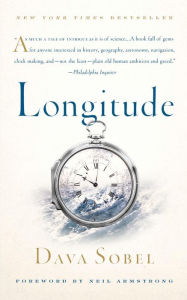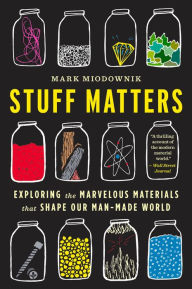RICHARD RHODES is most recently the author of The Twilight of the Bombs, the last volume in a quartet about nuclear history. The first, The Making of the Atomic Bomb, won the Pulitzer Prize, a National Book Award, and a National Book Critics Circle Award.
Hedy's Folly: The Life and Breakthrough Inventions of Hedy Lamarr, the Most Beautiful Woman in the World
Paperback
- ISBN-13: 9780307742957
- Publisher: Knopf Doubleday Publishing Group
- Publication date: 08/07/2012
- Pages: 288
- Sales rank: 208,860
- Product dimensions: 5.34(w) x 7.82(h) x 0.62(d)
.
Pulitzer Prize-winning author Richard Rhodes delivers a remarkable story of science history: how a ravishing film star and an avant-garde composer invented spread-spectrum radio, the technology that made wireless phones, GPS systems, and many other devices possible.
Beginning at a Hollywood dinner table, Hedy's Folly tells a wild story of innovation that culminates in U.S. patent number 2,292,387 for a "secret communication system." Along the way Rhodes weaves together Hollywood’s golden era, the history of Vienna, 1920s Paris, weapons design, music, a tutorial on patent law and a brief treatise on transmission technology. Narrated with the rigor and charisma we've come to expect of Rhodes, it is a remarkable narrative adventure about spread-spectrum radio's genesis and unlikely amateur inventors collaborating to change the world.
Customers Who Bought This Item Also Bought
-
- The Making of the Atomic Bomb:…
- by Richard Rhodes
-
- The Clockwork Universe: Isaac…
- by Edward Dolnick
-
- My Inventions and Other…
- by Nikola TeslaSamantha Hunt
-
- Longitude: The True Story of a…
- by Dava Sobel
-
- The Information: A History, a…
- by James Gleick
-
- The Age of Wonder: How the…
- by Richard Holmes
-
- Napoleon's Buttons
- by Penny Le CouteurJay Burreson
-
- The Idea Factory: Bell Labs…
- by Jon Gertner
-
- Where Good Ideas Come From
- by Steven Johnson
-
- Turing's Cathedral: The…
- by George Dyson
-
- Stuff Matters: Exploring the…
- by Mark MiodownikAimee Clark
-
- The Man Who Knew Infinity: A…
- by Robert Kanigel
-
- The Universe Within: The Deep…
- by Neil Shubin
-
- The Double Helix: A Personal…
- by James D. Watson
-
- Tough Without a Gun: The Life…
- by Stefan Kanfer
-
- Knocking on Heaven's Door:…
- by Lisa Randall
-
- Ava Gardner: Love is Nothing
- by Lee Server
-
- Life Itself: A Memoir
- by Roger Ebert
Recently Viewed
Praise for Richard Rhodes’s Hedy’s Folly:
"Fascinating. . . . mixes thorough techno research with Hollywood glam. . . . Rhodes drops quite a bombshell."--USA Today
"A smart, strange and fascinating book."--Washington Post
"It's to Mr. Rhodes's credit that he gently makes this implausible story plausible."--New York Times
"Unveils the inquisitive brain behind the beauty.... [It] reads at turns like a romance novel, patent law primer, noir narrative and exercise in forensic psychology.” —Los Angeles Times
"Rhodes's talent is making the scientifically complex accessible to the proverbial lay reader with clarity and without dumbing down the essentials of his topics."--The New York Times Book Review
"[A] charming and remarkably seamless book."—Salon
"Fascinating . . . shows Hedy Lamarr to have been a secret weapon in more ways than one."—Newsweek
"Richard Rhodes is the perfect historian to describe the abilities of Hedy Lamarr and George Antheil as scientists and inventors."--Larry McMurtry, Harper's Magazine
"Richard Rhodes's book should be celebrated: he shows that even in the "information" age, there is a way to write about an American movie star that gives readers something new."--The New Republic
"Hedy Lamarr, glamorous Hollywood star. Hedy Lamarr, glamorous genius inventor.
That's the gist of Richard Rhodes' Hedy's Folly . . . although, of course, it's far more complicated than that. And far more fascinating."—Philadelphia Inquirer
"Hedy's Folly is a reminder that neither time nor gravity can diminish the allure of a beautiful mind."--Bloomberg Business Week
"Rhodes, who has written about everything from atomic power to sex to John James Audubon, is apparently incapable of writing a bad book and most of what he does is absolutely superior."--The Daily Beast
"A riveting narrative, propelled by the ambition and idiosyncrasies of the inventors at its core."--Science News
"[A]n unusual and worthwhile read."—Washington Times
"[C]aptivating."—Boston Globe
"A focused glimpse into one actress’ remarkable life, and the rare mix of war, patriotism and intellect that fomented her unlikely invention."—Dallas Morning News
"Rhodes...manages to capture the sheer improbability of these unlikely Edisons."—Entertainment Weekly
"Rhodes puts Lamarr’s inventive spirit into coherent context.... [His] book gives us the whole Hedy — a closet geek in peacock feathers — and makes that mix believable."— Nature
"Riveting. . . . There’s enough technical and military history here to keep Rhodes’s hard-core fan base satisfied. But the cultural history is just as interesting, and Rhodes tells both stories with a sure and supple hand."—The New York Observer
—The Washington Post
—The New York Times
—The New York Times Book Review
Rhodes begins his captivating narrative in Vienna, where the young Hedwig Kiesler, born in 1913, dropped out of school at the age of sixteen to become an actress. Within a year she'd won the lead role in a Czech film, Ekstase, which was so steamy for its time that Hedy's father forced the family to walk out during the premiere. Two short years later found her married to Fritz Mandl, a wealthy Austrian arms dealer almost twice her age. Mandl had become obsessed with the young actress after seeing her on the stage, but after their marriage he not only prohibited her from acting but fruitlessly attempted to buy up every existing copy of Ekstase.
While the unhappy union left her feeling, as she later wrote, like "an object of art which had to be guarded," it also introduced her to the subject of modern weapons development, as apparently chatty Austrian and German politicians, diplomats, and engineers were guests at the couple's frequent parties.
In 1937, Hedy finally escaped her marriage, fleeing to London, where she met film mogul Louis B. Mayer, who was visiting from Hollywood. She managed to book passage on the same transatlantic ship as Mayer; by the time they arrived in the United States, he had signed her to his MGM Studios and rechristened her Hedy Lamarr. Her American film career was launched with 1938's Algiers, which made her a star.
Lamarr, possessed of a restless intellect, "didn't drink and?didn't like to party, so she took up inventing" to fill the idle months between movies, Rhodes writes. Her early projects included a tissue–box attachment to hold used tissues and a bouillon cube that, when dropped in water, would create cola. But with the start of World War II, her inventing took a more purposeful turn, particularly as German forces attacked British passenger ships evacuating children from London to protect them from the Blitz. Devastated by the September 1940 sinking of the SS City of Benares, which left seventy–seven children dead, Lamarr "decided the Allies had to do something about the German submarine menace. She began thinking about how to invent a remote–controlled torpedo to attack submarines."
Around this time, the actress met the avant–garde composer George Antheil, whose story Rhodes tells in alternating chapters with Lamarr's. Once she'd freed herself from Mandl's clutches, Lamarr's path to stardom was relatively effortless. Antheil had a more difficult time. Performances of his far–out compositions were enough to cause riots, and he struggled to make a living in both Europe and America. A gifted polymath, he'd begun writing to earn extra money and had published a series of articles on his theories of endocrinology for Esquire. In his bestselling memoir, Bad Boy of Music, Antheil claims that the actress had requested the introduction from mutual friends in the hopes that Antheil could apply his knowledge of glandular science to helping her enlarge her breasts.
Whether or not that eyebrow–raising claim has any truth to it, the two soon began to collaborate on a project of indisputable seriousness. After discussing the war, they commenced work on Lamarr's concept for the remote–controlled torpedo. The actress's idea was to create a frequency–hopping radio signal and to synchronize the frequency changes between a ship or plane and its torpedo, thus preventing the enemy from jamming the signal; Antheil's role, according to Rhodes, was "to help her reduce [the idea] to practice." He was an appropriate partner: not only had he been a onetime munitions inspector for the U.S. government, but as a composer, he was, Rhodes writes, "something of an expert on making machines talk to each other in synchrony." His infamous Ballet Mécanique had involved the synchronization of 16 player pianos.
The two worked tirelessly and received a patent for their efforts in 1942, but the military, after evaluating their system, declined to use it. Years later, unbeknownst to Lamarr and Antheil (who died in 1959, the year their patent expired), the government secretly revived research on the frequency–hopping system. It became the basis of spread–spectrum technology, which makes wireless networking possible, but the two remained uncredited, which Lamarr noted with bitterness late in her life. Recognition, though long delayed, did come at last, and in 1997, the eighty–two–year–old Lamarr, by then married and divorced six times and living alone in Florida, received the Electronic Frontier Foundation's Pioneer Award, three years before her death.
Rhodes uses this fascinating sliver of history to ruminate on the "strange business" of invention. He also touches on the "misogynistic debate" about Lamarr's contributions, which has seen detractors insisting that she must have lifted her idea wholesale from Mandl's circle. Indeed, for some it might be simply impossible to accept not just that a woman, but a woman as beautiful and glamorous as Lamarr could also be so brainy. When the Navy rejected her idea, Lamarr turned to a more conventional route for helping with the Allied effort, traveling the country, using her fame and face to sell war bonds. They sold like gangbusters.
Barbara Spindel has covered books for Time Out New York, Newsweek.com, Details, and Spin. She holds a Ph.D. in American Studies.



















